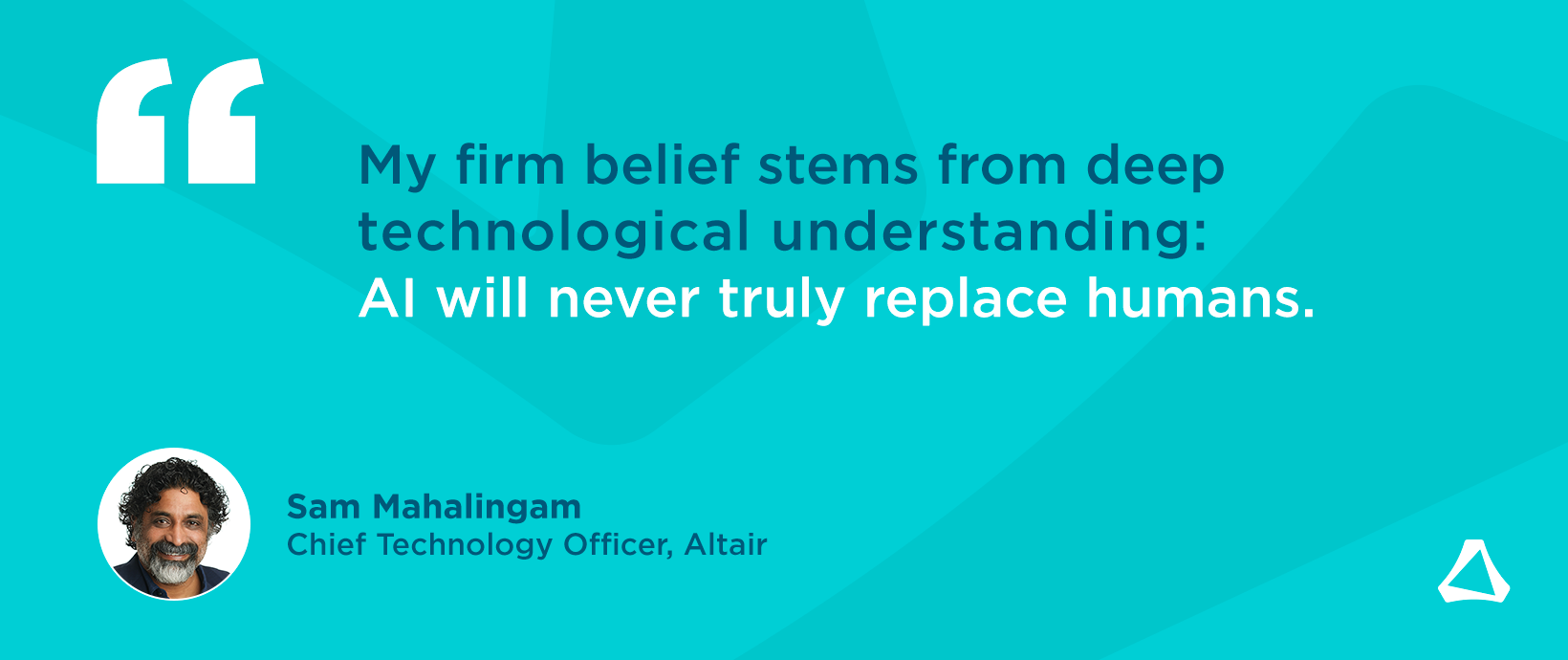Convergence of Simulation and Data Analytics Will Transform All Industries

Last month we hosted the Altair Data Analytics Summit, where we gathered a group of customers and data experts – from all industries across the globe – to discuss the latest trends happening in data transformation, machine learning (ML) and artificial intelligence (AI).
Our keynote, Dr. Carsten Bange, founder and CEO of BARC, was particularly compelling as he spoke on data analytics trends affecting enterprises today – no matter what stage of the journey they may be in. He narrowed in on the top areas to invest in and focus on for smarter decision making – data strategy, business intelligence, data architecture, and data literacy. I particularly enjoyed his phrase ‘making order out of chaos’ in reference to data, and the importance of building competencies around data, analysis, technology and collaboration. His speech really resonated with me, as Altair also understands the true value and importance of data coming together with other disciplines across all business sectors, including product development. In fact, it’s a large part of why we acquired Datawatch more than 18 months ago.
Our vision is to transform customer decision making with simulation, data analytics, and high-performance computing. Because at Altair, we see a future where the world of data science intersects with high-performance cloud computing, artificial intelligence and IoT. Where seemingly disparate systems work seamlessly together to help businesses succeed. Where pin-point accuracy and speed mean the difference between winning and losing.
In support, we have assembled a unique and powerful software stack that stands up our powerful vision. Our product roadmap includes a tight integration of data preparation, data science, automation deployment, and high-speed data visualization, but with a strong, open philosophy to be able to ingest data from anywhere and export to other solutions.
Altair is exploiting the huge potential that exists at the convergence of model-based simulation and data-driven simulation solutions. Whether defining more effective business workflows, using fleet-wide data acquisition to improve operational efficiency or enabling the predictive maintenance of critical assets, the true potential of combining advanced physics simulations and data science solutions throughout enterprises is just being realized.
Here is how it works. When it comes to engineering, most designers use computer aided engineering (CAE) or computer aided design (CAD) tools during the process to come up with innovative new forms that are lighter, stronger, longer lasting, and better performing. With simulation tools, we can see in a virtual environment how that product will perform in various conditions. But what if we run a huge number of simulations to create “synthetic” data and combine this with sensor data on how that product performs in the real world into the algorithm? That’s where ML and AI come in in the form of digital twins.
Basically, ML and AI harness massive amounts of synthetic and real world data to help make smarter decisions faster, without much emotion; data-driven decisions can be trusted as they take huge amounts of input from many points. In my opinion, it’s as simple as creating an environment where the algorithms will help us make the best decisions. And with Altair’s unique position in the market and software stack, we can help customers create both data-driven digital twins and simulation-driven digital twins.
In fact, we see the combination of data analytics and simulation greatly influencing these five global trends:
- Evolution toward smart, connected everything
- Drive for increased variety of products with higher quality and better aesthetics
- Electronics and controls integrated with mechanical design is driving product value
- Simulation and data-driven digital twins will drive decisions
- Massive exploration of ideas is driving need for advanced HPC and cloud
And these trends span all functions and industries – far beyond just engineering. For example, retailers, financial companies and banks are using our data analytics technology (powered by ML) to drive trade decisions and to identify fraud. Like I mentioned earlier, the limitless potential of what we can do has just begun and we will keep moving forward to find new ways of using ML and AI to help you stay competitive in the race toward the future.




